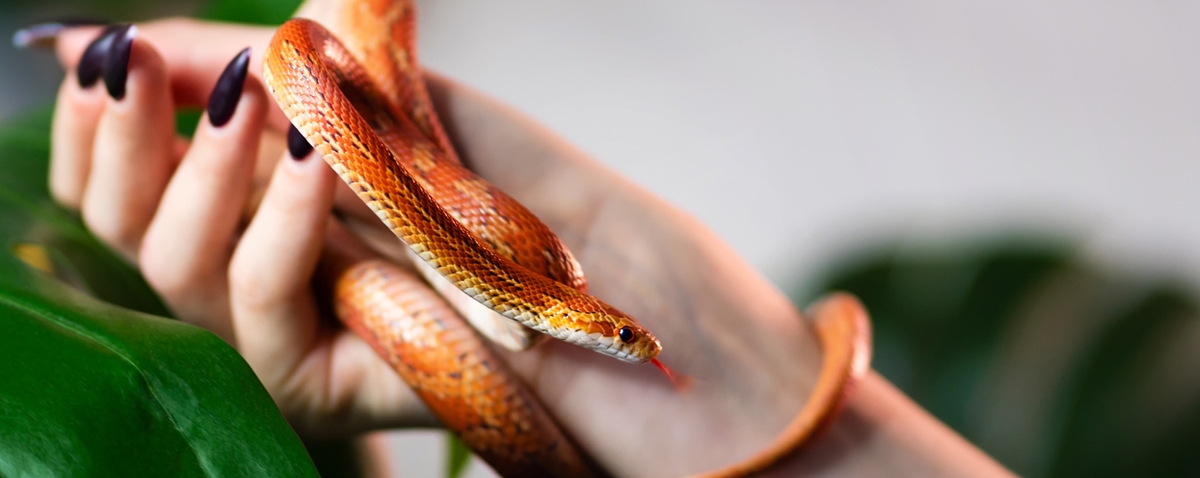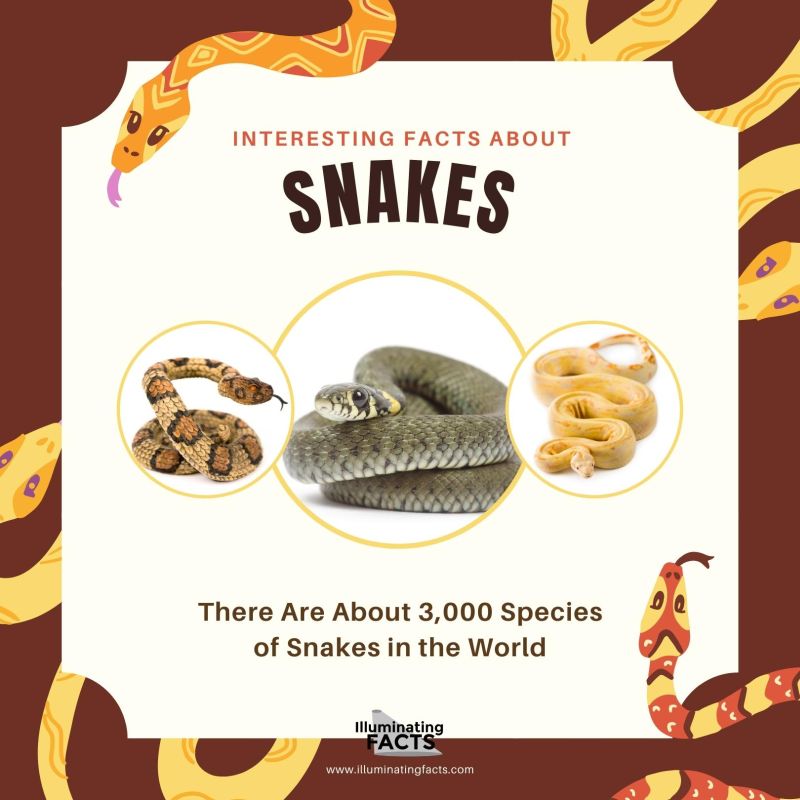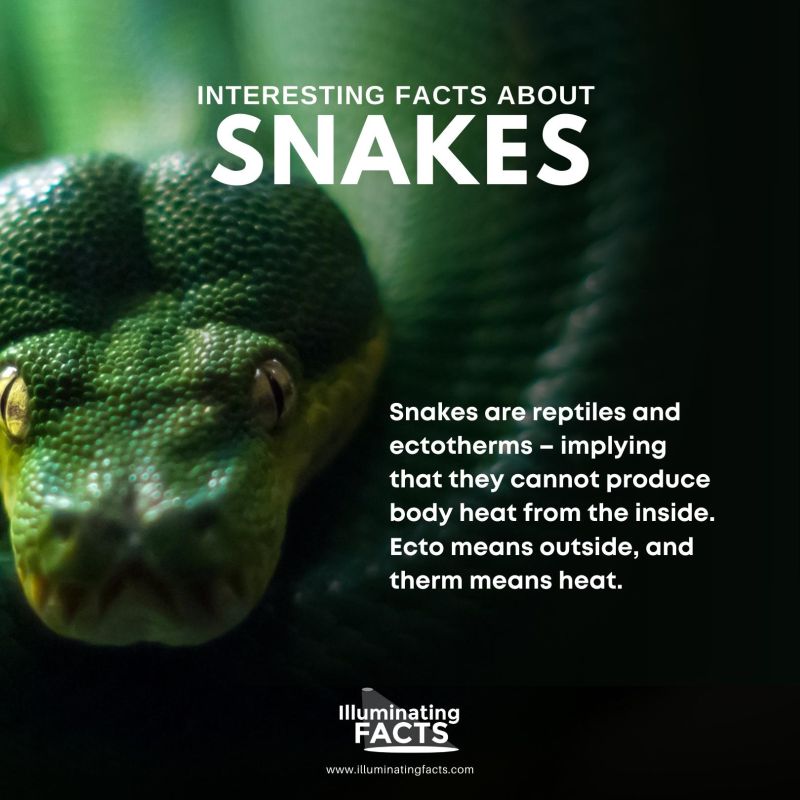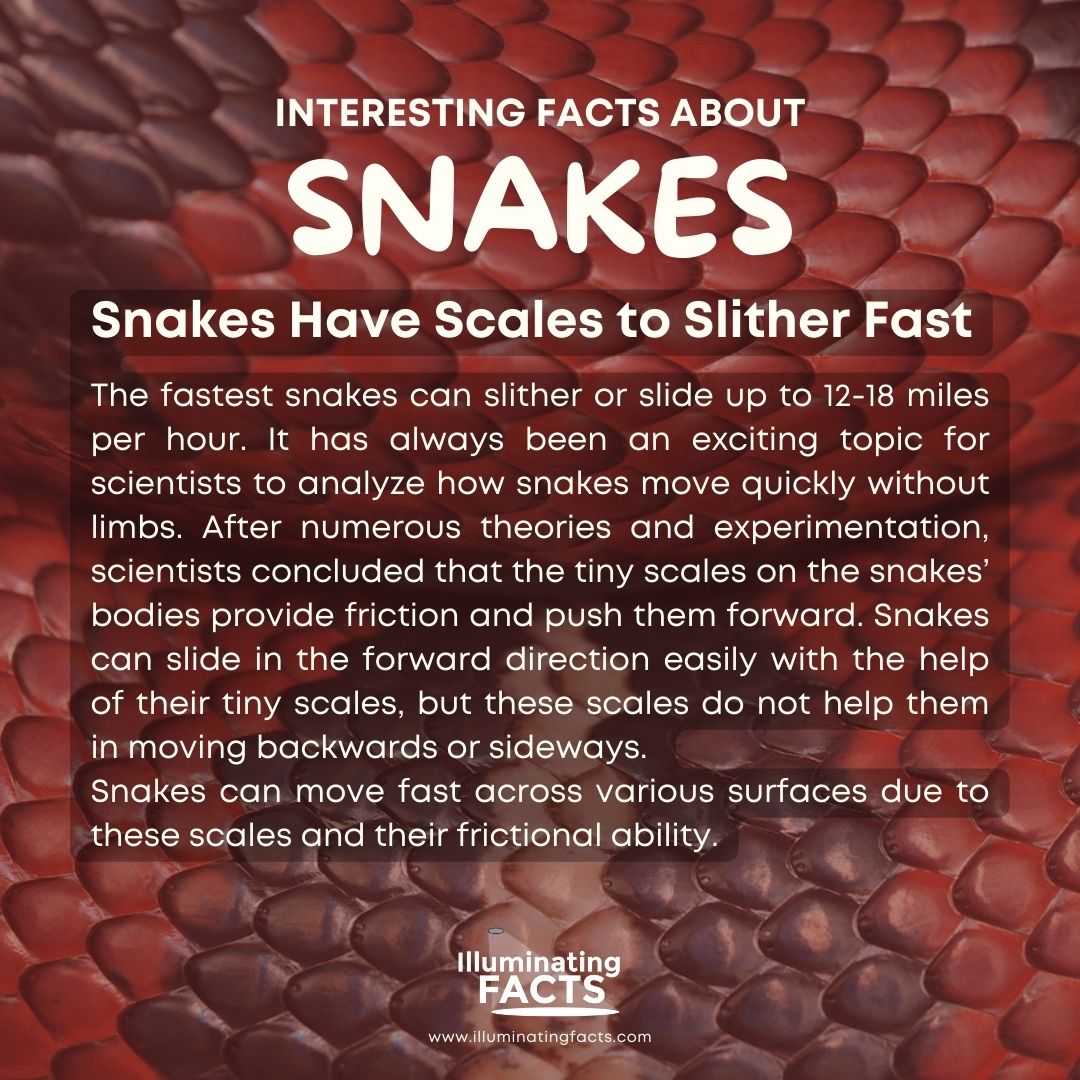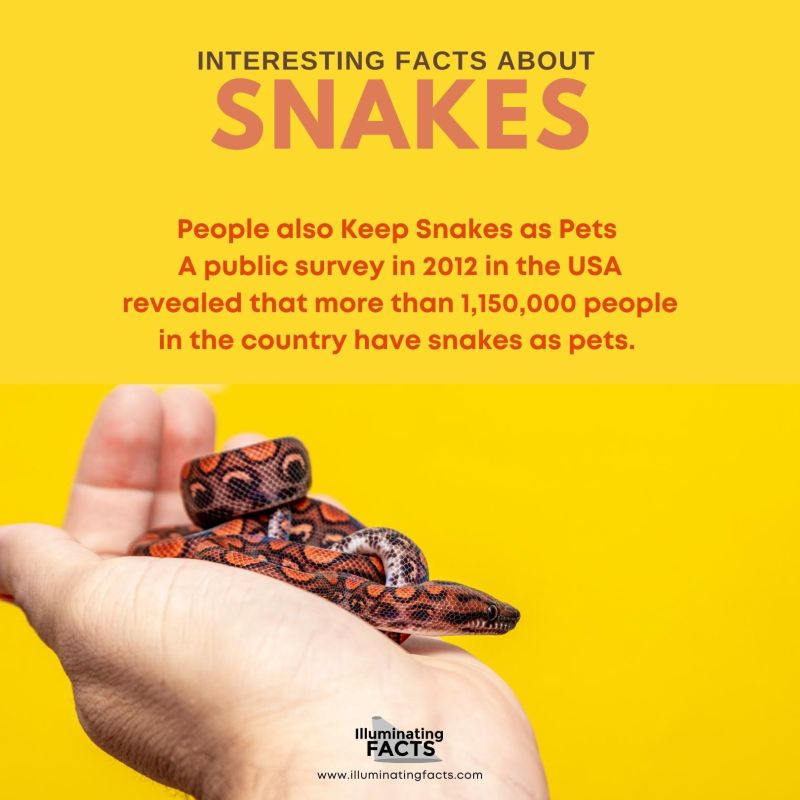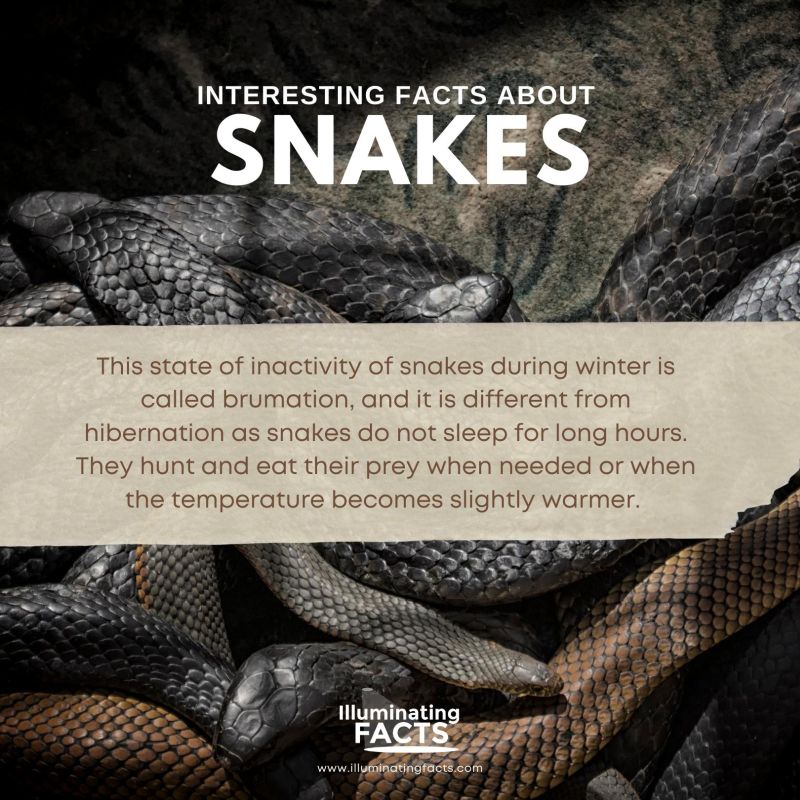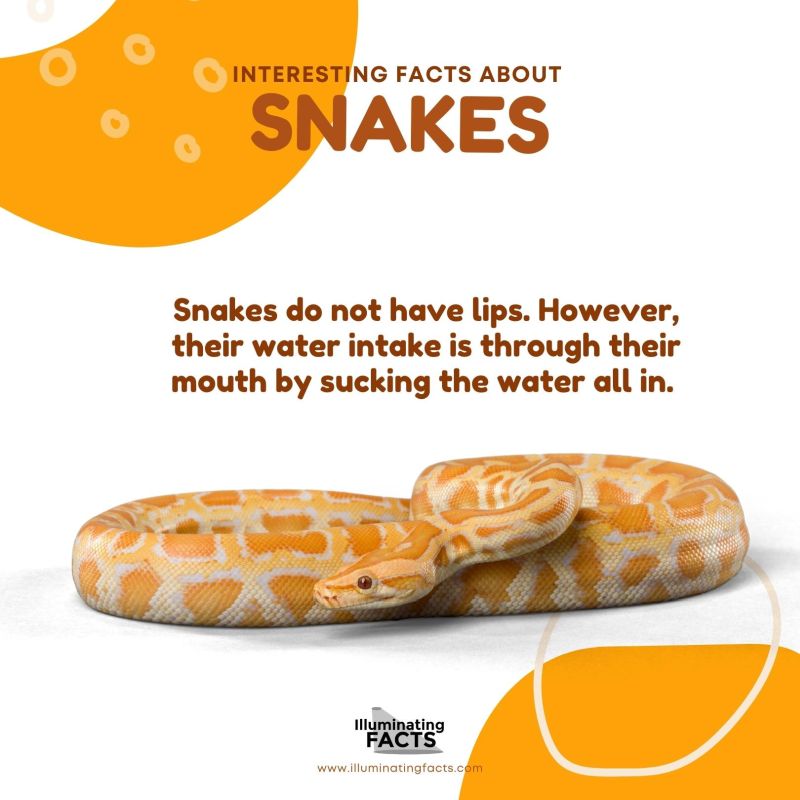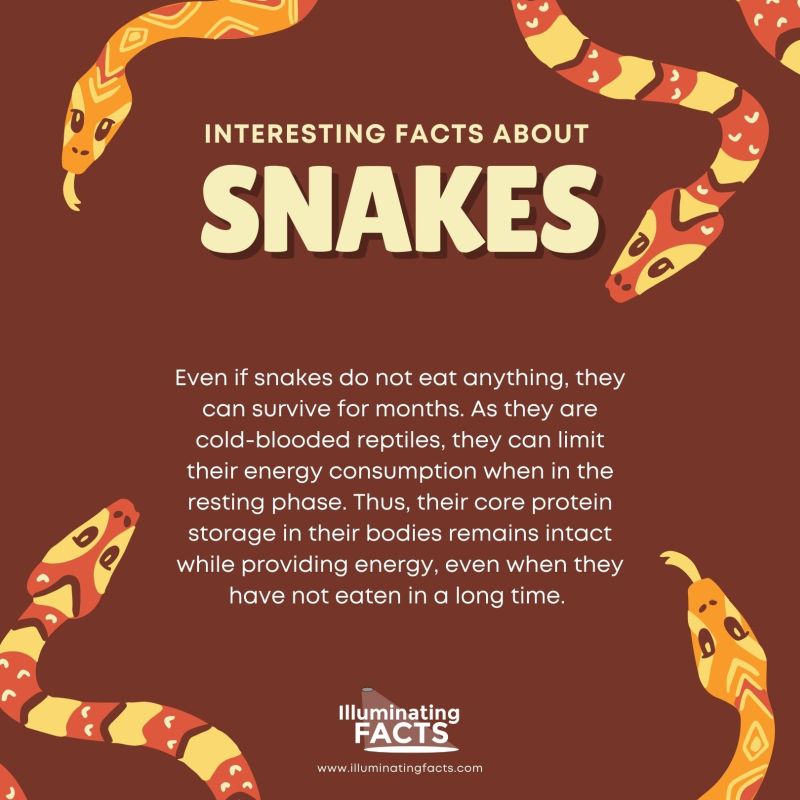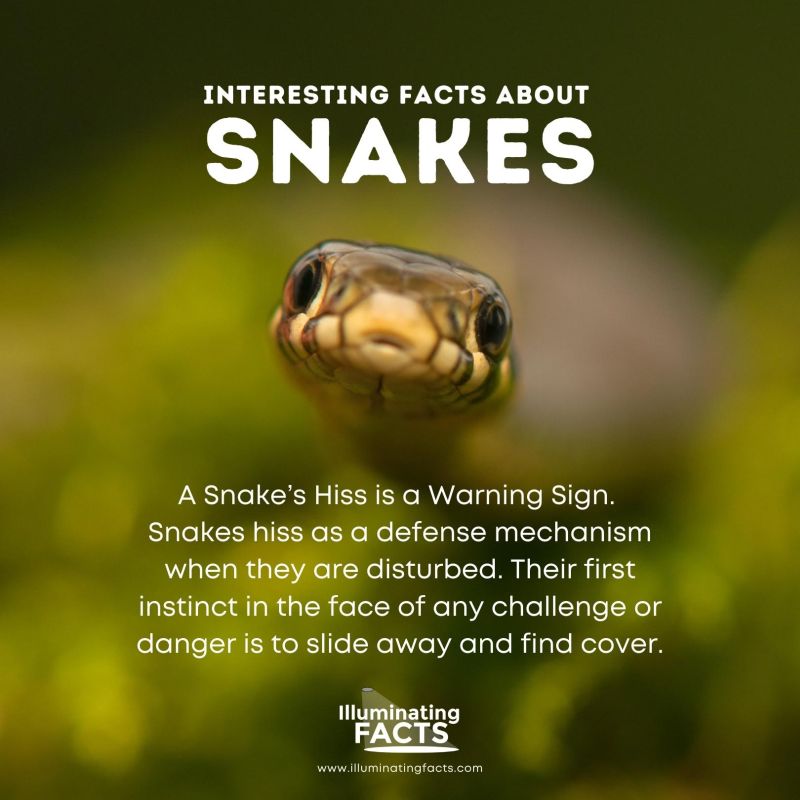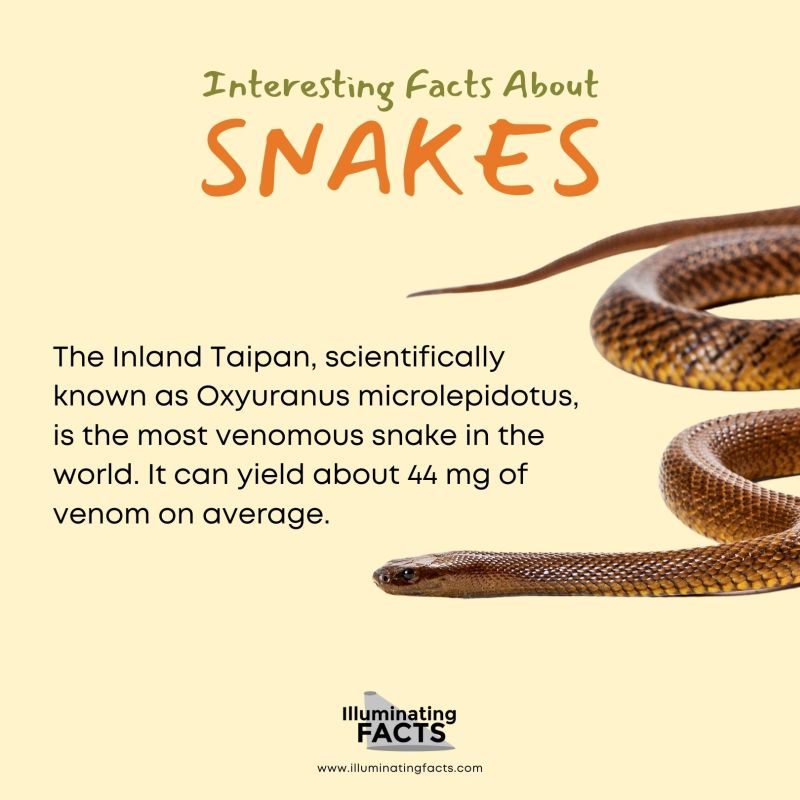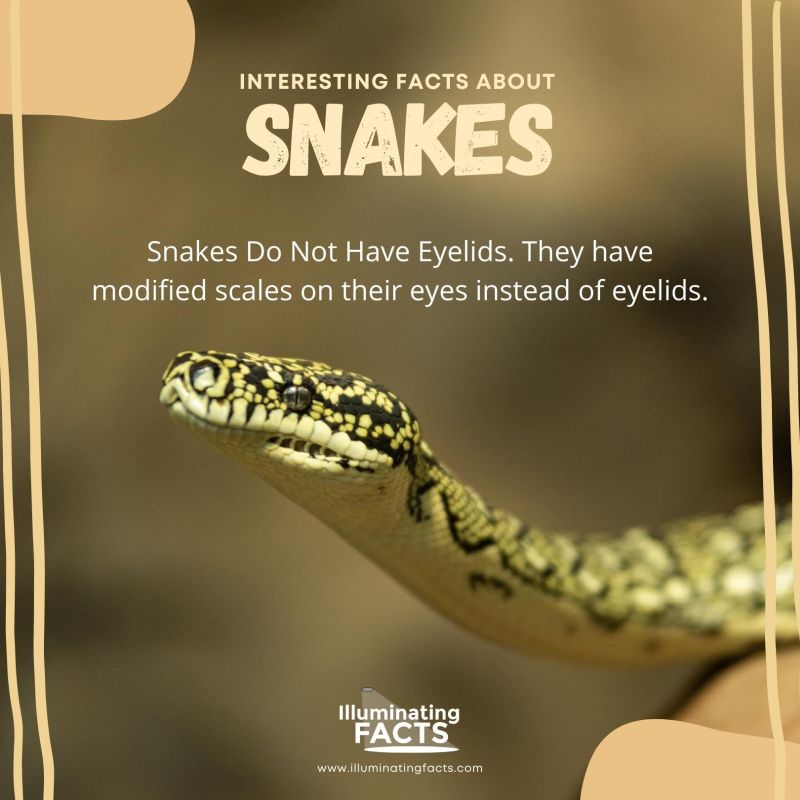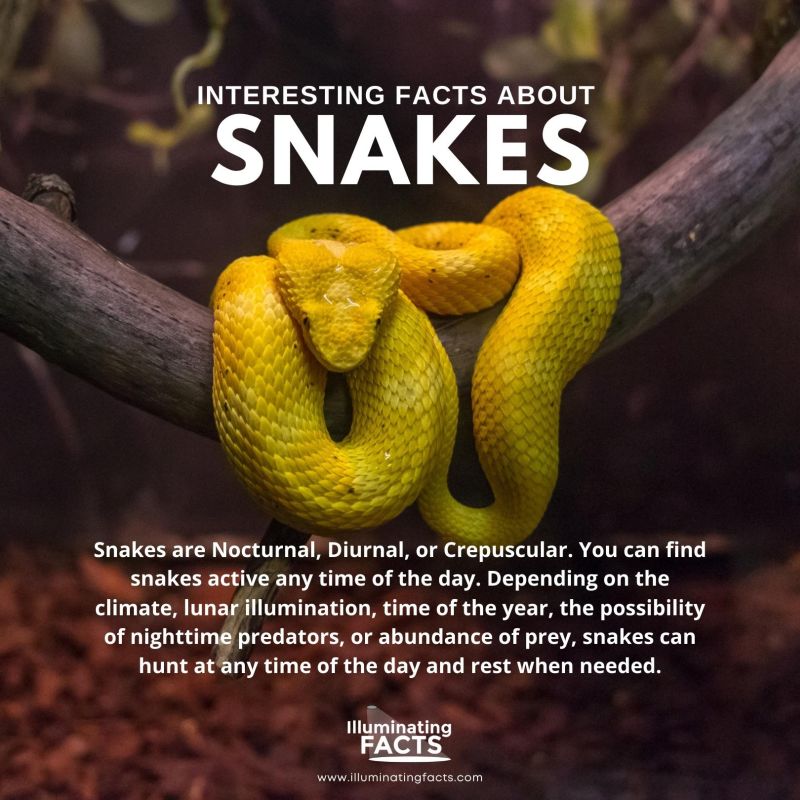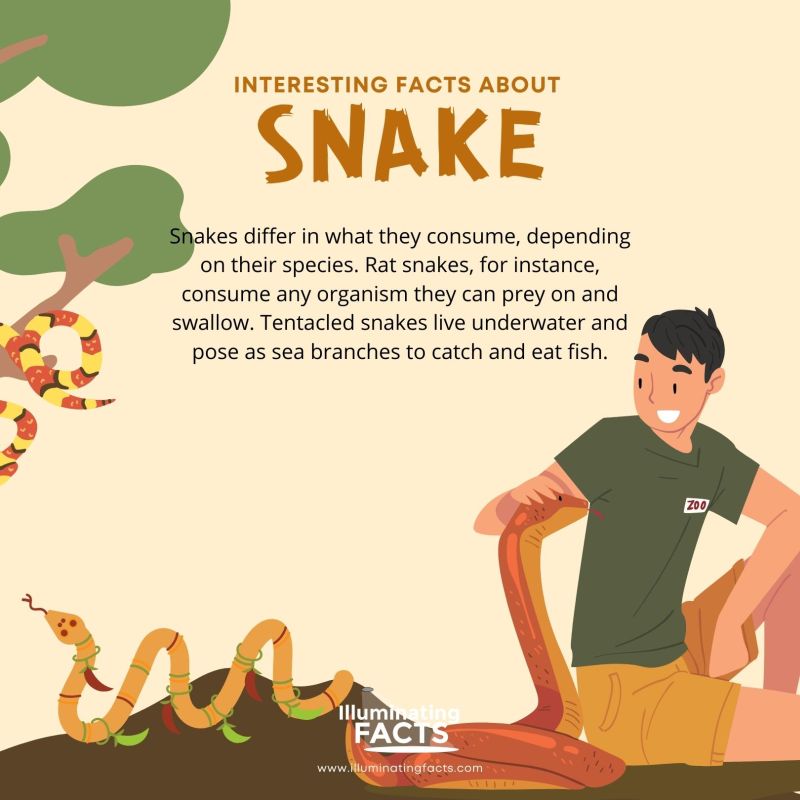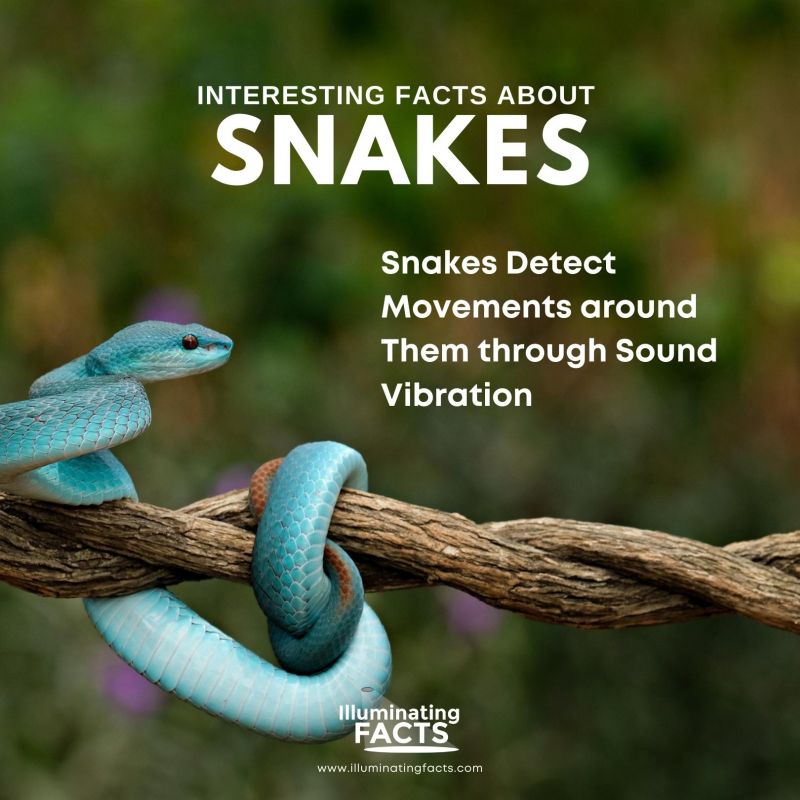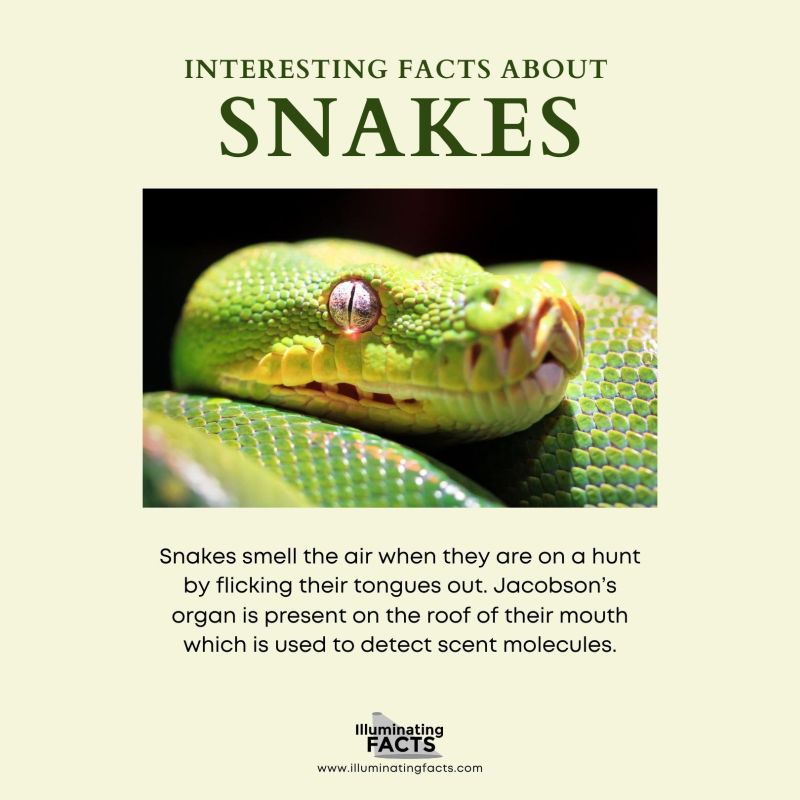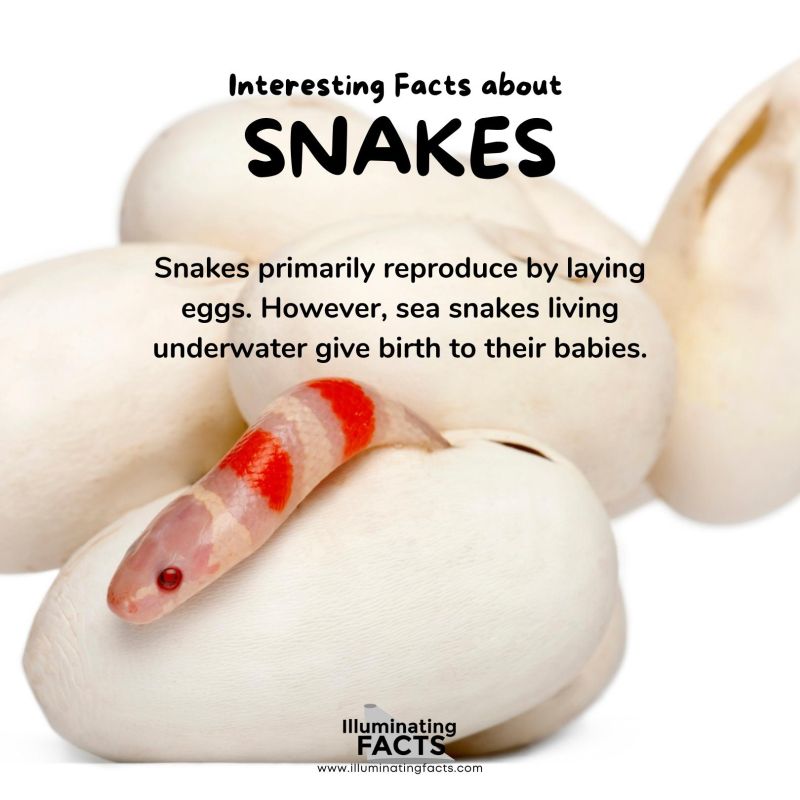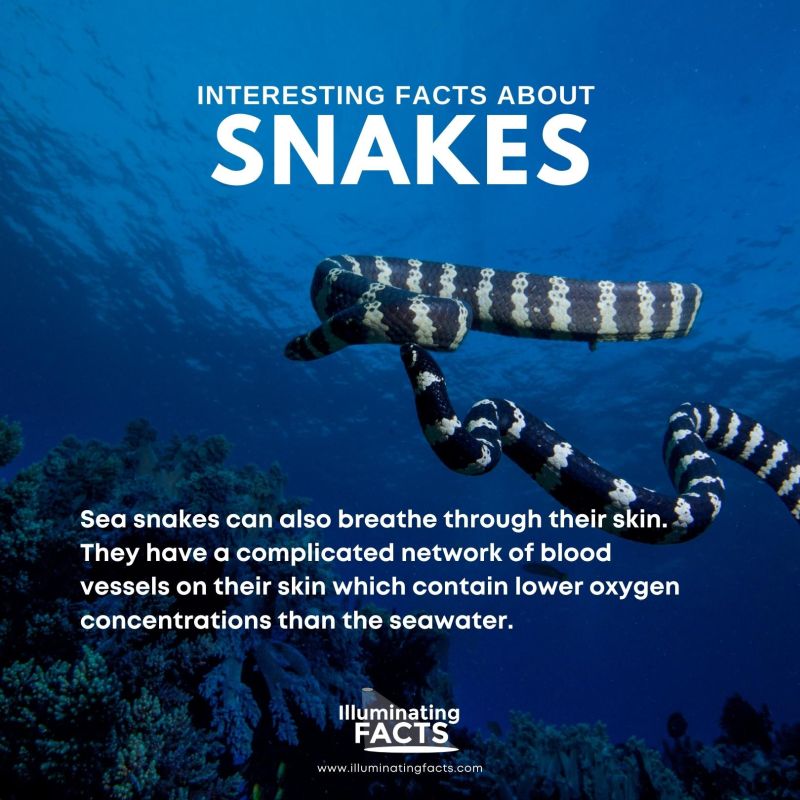Snakes are fascinating creatures, with some unique habits and characteristics that set them apart from other animals. There are several species and subspecies of snakes, so those who take an interest in nature will find a lot to study in this category. With snakes being present on every continent, it makes sense to know a little about them and their habits. The following facts will hopefully pique your interest in these and give a different perspective than before.
1. There Are About 3,000 Species of Snakes in the World
Our planet Earth is a host to about 3,000 species of snakes. These snakes are found in every country except Antarctica, Ireland, Iceland, Greenland, and New Zealand. Out of the 3,000 discovered species of these limbless carnivorous reptiles, about 600 are venomous.
2. Venomous Snakes Are Dangerous But So Are Non-Venomous Snakes
About seven percent of the venomous species of snakes can significantly wound or kill a human being. However, the nonvenomous ones include harmless small snakes to the great deadly python. The astonishing fact is that even if nonvenomous snakes do not contain poison, they are equally dangerous.
Nonvenomous snakes are dangerous too. They can swallow their prey – humans or animals – alive or constrict them to death by wrapping their slithering bodies tightly around the prey. [1]
3. Snakes are Ectotherm Reptiles 
Snakes are reptiles and ectotherms – implying that they cannot produce body heat from the inside. Ecto means outside, and therm means heat. Thus, snakes rely on the outside environment to regulate their body temperature.
Hot weather outside warms up these cold-blooded reptiles’ bodies and provides the energy to go about their lives. It is a primary reason snakes cannot survive in regions with harsh winters. [2]
4. Snakes are Different than Other Reptiles 
Snakes are carnivorous; thus, they only eat meat or animal eggs. Snakes swallow their food whole. [11]
5. Snakes Have Scales to Slither Fast
The fastest snakes can slither or slide up to 12-18 miles per hour. It has always been an exciting topic for scientists to analyze how snakes move quickly without limbs. After numerous theories and experimentation, scientists concluded that the tiny scales on the snakes’ bodies provide friction and push them forward. Snakes can slide in the forward direction easily with the help of their tiny scales, but these scales do not help them in moving backwards or sideways.
Snakes can move fast across various surfaces due to these scales and their frictional ability. [3]
6. People also Keep Snakes as Pets 
A public survey in 2012 in the USA revealed that more than 1,150,000 people in the country have snakes as pets. These reptiles are increasingly becoming more popular as pets with the millennials. The most popular pet snake, according to the survey, is the ball python snake. 4% of American pet owners have snaked as per and the numbers are increasing rapidly. [4]
7. Snakes Brumate during Cold Weather 
We have all heard about animals hibernating during winter, wherein they sleep for long hours in safe places. Snakes are cold-blooded animals, and their bodies become less active during winter. Their metabolism also slows down to a bare minimum during low temperatures. It is when snakes hide in safe places such as old animal burrows, big fallen logs, or other manmade vacant buildings.
This state of inactivity of snakes during winter is called brumation, and it is different from hibernation as snakes do not sleep for long hours. They hunt and eat their prey when needed or when the temperature becomes slightly warmer. [5]
8. Snakes Do Not Have Lips 
Snakes do not have lips. However, their water intake is through their mouth by sucking the water all in.
9. Snakes Can Go Without Food for Several Months
Even if snakes do not eat anything, they can survive for months. As they are cold-blooded reptiles, they can limit their energy consumption when in the resting phase. Thus, their core protein storage in their bodies remains intact while providing energy, even when they have not eaten in a long time.
10. Snakes Do Have Teeth
Most snakes have teeth. There are four rows of teeth on the top and two rows on the bottom. Their teeth are curved and small, allowing them to have a good grip on their prey. Depending on the various species of snakes, some might have sharper or longer teeth. [12]
11. A Snake’s Hiss is a Warning Sign
Snakes hiss as a defense mechanism when they are disturbed. Their first instinct in the face of any challenge or danger is to slide away and find cover. However, failing to do so results in boiling their anger, and they might hiss to warn the disturber that they are ready to strike.
12. The longest Reticulated Python Measures 33 feet in length 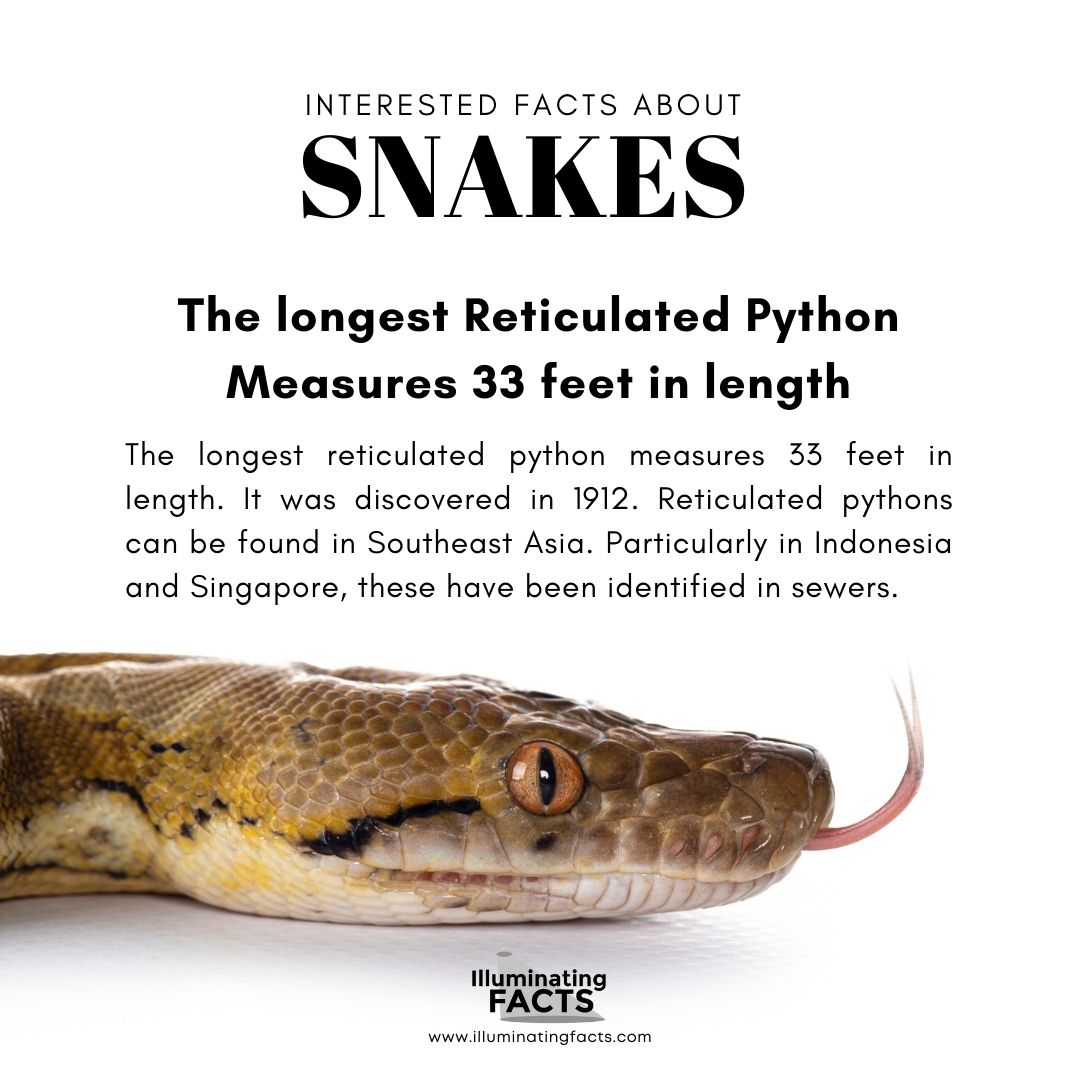
The longest reticulated python measures 33 feet in length. It was discovered in 1912. Reticulated pythons can be found in Southeast Asia. Particularly in Indonesia and Singapore, these have been identified in sewers. [13]
13. The World’s Smallest Snake is Called the Barbados Threadsnake 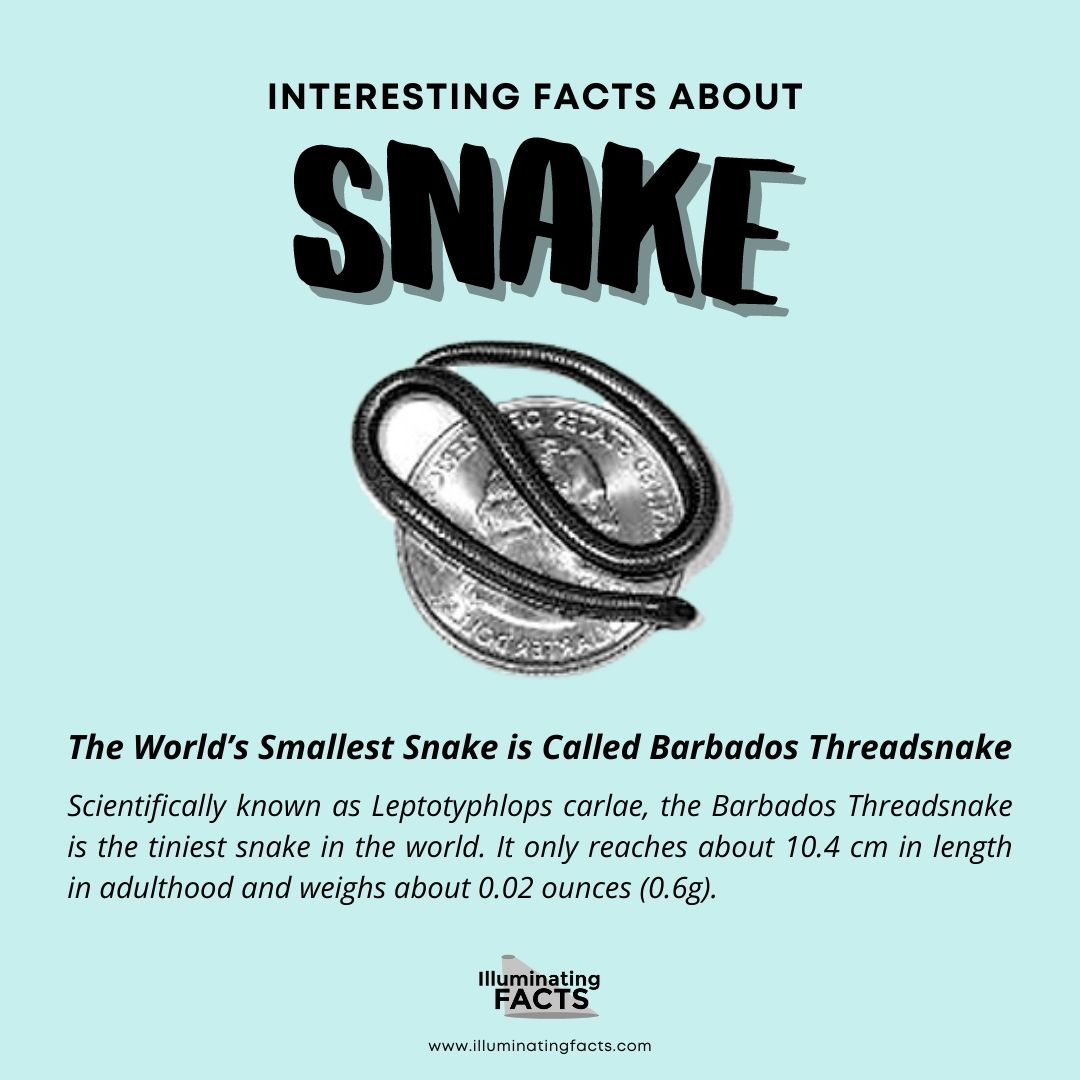
Scientifically known as Leptotyphlops carlae, the Barbados Threadsnake is the tiniest snake in the world. It only reaches about 10.4 cm in length in adulthood and weighs about 0.02 ounces (0.6g). [6]
14. Venomous is the Term that Suites Snakes Better instead of Poisonous 
Biologists have explained that snakes are venomous as this term applies to the organisms that have to bite to inject their toxins into other bodies. On the other hand, poisonous is the term for organisms that transfer their toxins when someone consumes them. [7]
15. Inland Taipan is the Most Venomous Snake Worldwide 
The Inland Taipan, scientifically known as Oxyuranus microlepidotus, is the most venomous snake in the world. It can yield about 44 mg of venom on average. However, it is often compared to the African Black Mamba, which is less venomous than the Inland Taipan but way bigger.
Considering the size, the African Black Mamba is huge (about seven ft. long). Even though the black mamba is less venomous than the Inland Taipan, the frightening size makes it more dangerous than the former. [8]
16. Snakes Do Not Have Eyelids 
Snakes have modified scales on their eyes instead of eyelids. These scales, also called eye caps, protect their eyes from dust while maintaining moisture in the eyes and keeping the cornea functional. [14]
17. Snakes are Nocturnal, Diurnal, or Crepuscular 
You can find snakes active any time of the day. Depending on the climate, lunar illumination, time of the year, the possibility of nighttime predators, or abundance of prey, snakes can hunt at any time of the day and rest when needed. That’s why they are called nocturnal, diurnal, or crepuscular. [9]
18. Different Species of Snakes Prey on Different Living Beings
Snakes differ in what they consume, depending on their species. Rat snakes, for instance, consume any organism they can prey on and swallow. Tentacled snakes live underwater and pose as sea branches to catch and eat fish.
19. Snakes Detect Movements around Them through Sound Vibration
Snakes lack external ears. In other animal species similar to snakes, such as lizards, an ear bone helps them hear things. However, snakes do not hear things like other animals. However, they can detect sound vibrations through the ground using the internal ear bones to know about any movement near them.
20. Snakes Have a Great Sense of Smell
Snakes smell the air when they are on a hunt by flicking their tongues out. They have a special smell sensor called Jacobson’s organ. This organ is present on the roof of their mouth, which intimates them about scent molecules detected by their tongues. [17]
21. Snakes Have a Small Tail 
Snake skeletons are unique. Most of the lengths of their bodies comprise torsos that have ribs and an extremely flexible spine. The whole body of a snake might look like its tail, but only a tiny part of the body is the tail. [16]
22. Snakes Shed Multiple Times Every Year
Snakes shed their skin naturally every year. This shedding is mostly 4-12 times annually. In this process, the scales on their bodies first appear dull, and their eyes become opaque. It happens when the top layer of their skin separates from the layers underneath. [15]
When the skin is separated and ready to shed, snakes rub themselves on rough surfaces or objects to get rid of the unwanted skin.
23. Snakes Lay Eggs and Give Birth 
Snakes primarily reproduce by laying eggs. However, sea snakes living underwater give birth to their babies.
24. Some Sea Snakes Breathe Through Their Skin 
Some Sea snakes breathe through their skin. They have a complicated network of blood vessels on their skin which contain lower oxygen concentrations than the seawater. Thus, diffusion of the seawater into the blood vessels occurs, which results in an increase in the oxygen concentration in their bodies. [10]
25. You Can Fool a Snake by Standing Still in Front of Them 
Snakes do not have highly developed eyesight. They can easily mistake you for a rock or a tree when you stand still in front of them.
Conclusion
Not everyone may like snakes; some might even be afraid of the non-poisonous varieties. However, there’s no denying that snakes are among the most intriguing animals we can learn about. They come in all sorts of colors, shapes, sizes, and patterns, so you won’t get bored while learning about snakes. We hope the facts above were a fun and informative read for you; make sure to share them with anyone who likes these reptiles!
References
- Snakes, facts and information. (n.d.). National Geographic. https://www.nationalgeographic.com/animals/reptiles/facts/snakes-1
- Introduction to the Amazing Biology of Rattlesnakes. (n.d.). Toronto Zoo. https://www.torontozoo.com/adoptapond/rattlesnake_cur/unit1.pdf
- Hsu, J. (2009, June 8). Study shows how snakes slither. livescience.com. https://www.livescience.com/3639-study-shows-snakes-slither.html
- David, J. (2022, August 15). 23 fun and interesting snake facts and statistics. Everything Reptiles. https://www.everythingreptiles.com/21-snake-facts
- Munson, O., & TODAY, U. (2022, October 5). What is the biggest snake in the world? Meet the longest and heaviest snakes. USA TODAY. https://www.usatoday.com/story/news/2022/10/05/biggest-snake-in-the-world/10264598002/
- Barbados threadsnake. (n.d.). Encyclopedia Britannica. https://www.britannica.com/animal/Barbados-threadsnake
- What’s the difference between venomous and poisonous?(n.d.). Encyclopedia Britannica. https://www.britannica.com/story/whats-the-difference-between-venomous-and-poisonous
- Sawe, B. E. (2020, February 7). Inland taipan vs Black Mamba: Who is more deadly?https://www.worldatlas.com/articles/inland-taipan-vs-black-mamba-who-is-more-deadly.html
- Are snakes nocturnal, diurnal or crepuscular?(2022, June 24). Fauna Facts – An Animals and Pets Resource Site. https://faunafacts.com/snakes/nocturnal-diurnal-crepuscular
- Maxwell, C. (2022, July 20). How do sea snakes breathe?AZ Animals. https://a-z-animals.com/blog/how-do-sea-snakes-breathe/
- Snakes-feeding | VCA animal hospital. (n.d.). Vca. https://vcahospitals.com/know-your-pet/snakes-feeding
- BYJU’S. (2022, July 4). All snakes have teeth. BYJU’S Learning – Learn Math, Coding, Music & Arts Online | BYJU’S Canada |Tynker| Osmo | Epic. https://byjus.com/question-answer/all-snakes-have-teeth-falsetrue-1/
- Munson, O., & TODAY, U. (2022, October 5). What is the biggest snake in the world? Meet the longest and heaviest snakes. USA TODAY. https://www.usatoday.com/story/news/2022/10/05/biggest-snake-in-the-world/10264598002/
- Author1, A. (2021, January 4). Do snakes blink?Animal-Club.co.uk. https://animal-club.co.uk/do-snakes-blink/
- Why do snakes shed their skin?(n.d.). Iowa Department of Natural Resources. https://www.iowadnr.gov/About-DNR/DNR-News-Releases/ArticleID/158/Why-Do-Snakes-Shed-Their-Skin
- Do snakes have tails?(n.d.). Museum of Science, Boston. https://www.mos.org/pulsar/snake-tails
- Snake Sense Scents Game. (n.d.). California Academy of Sciences in San Francisco, CA. https://www.calacademy.org/sites/default/files/assets/docs/sah_snakes_snake_sense_scents_210722.pdf

